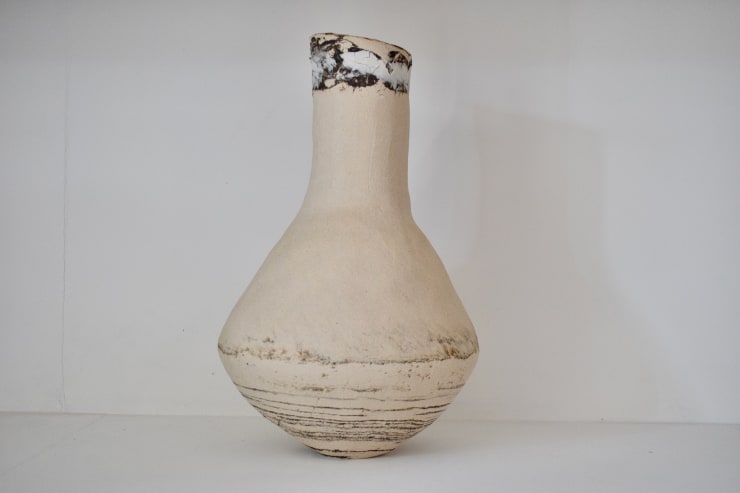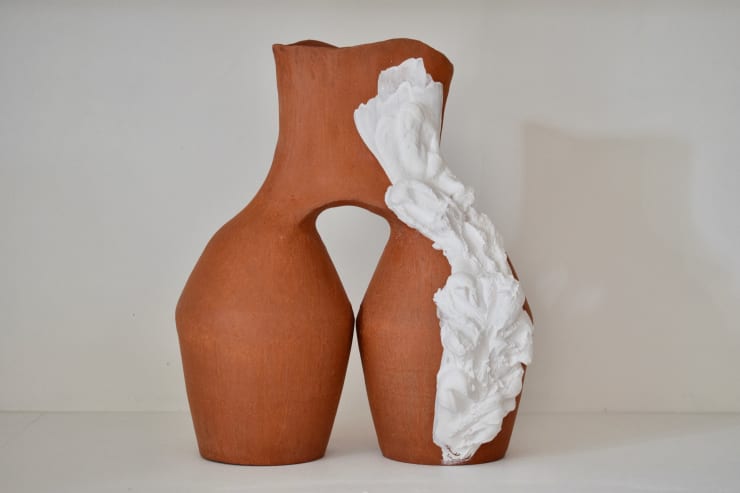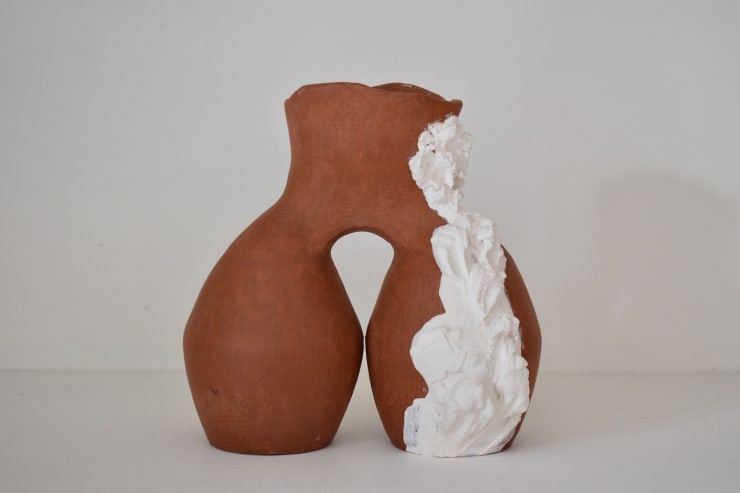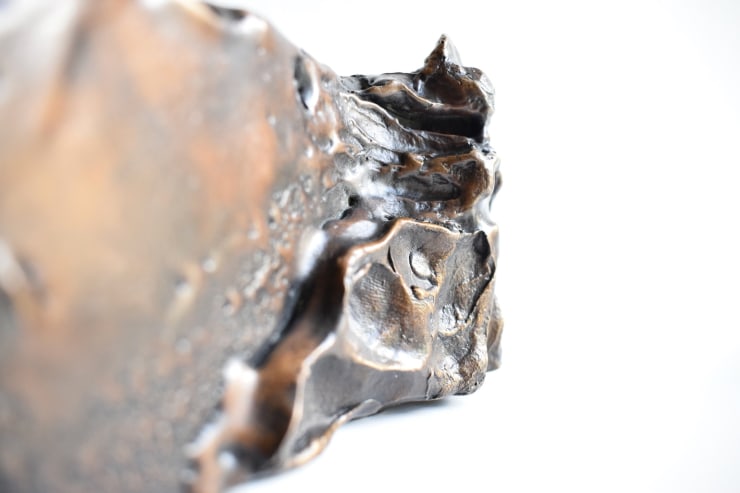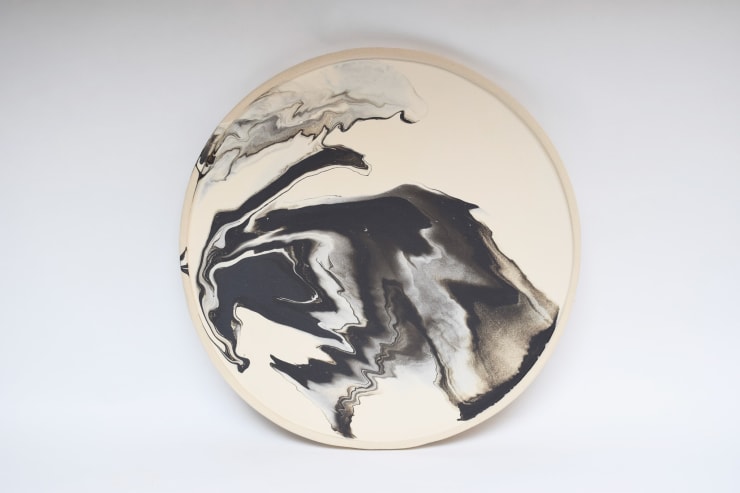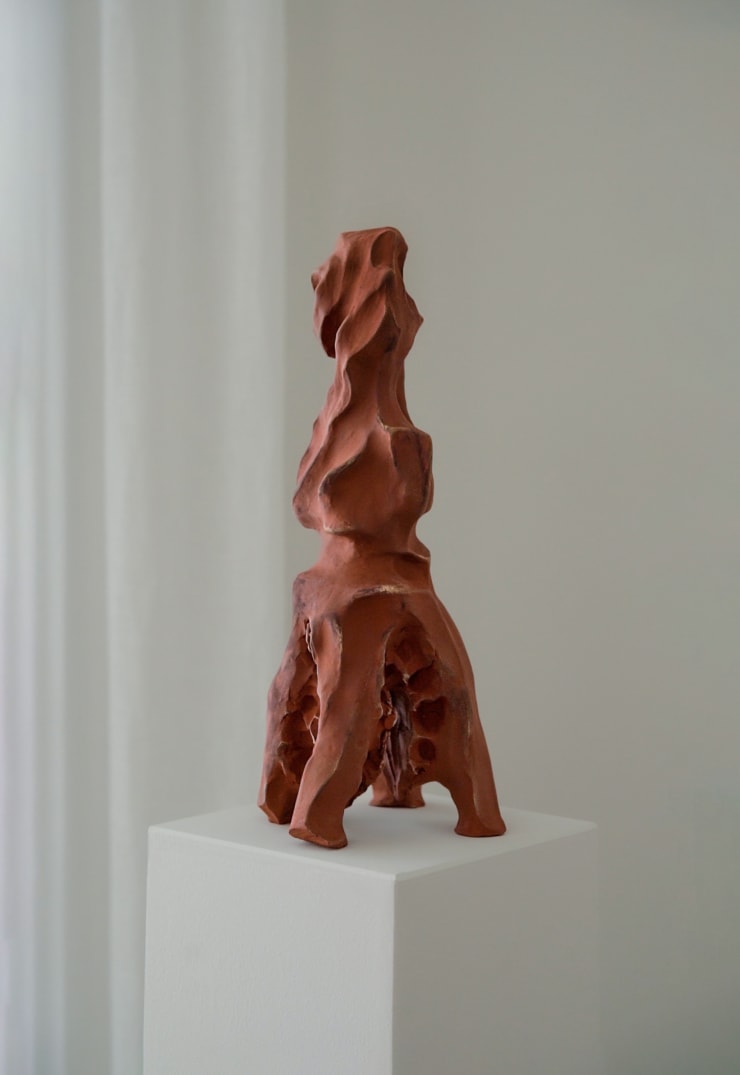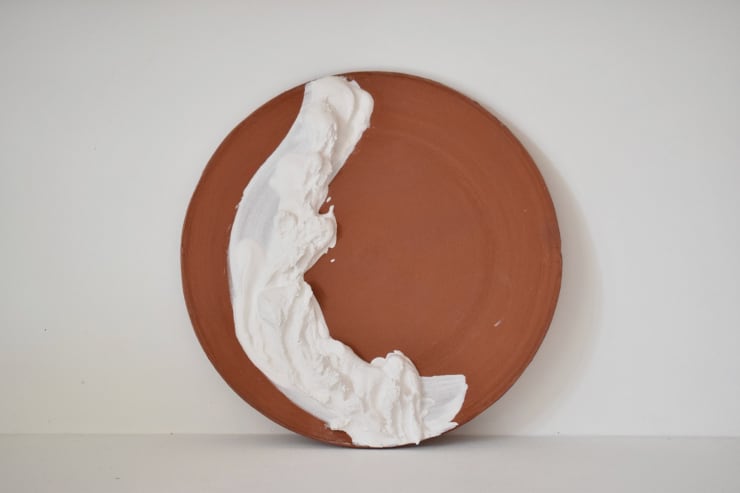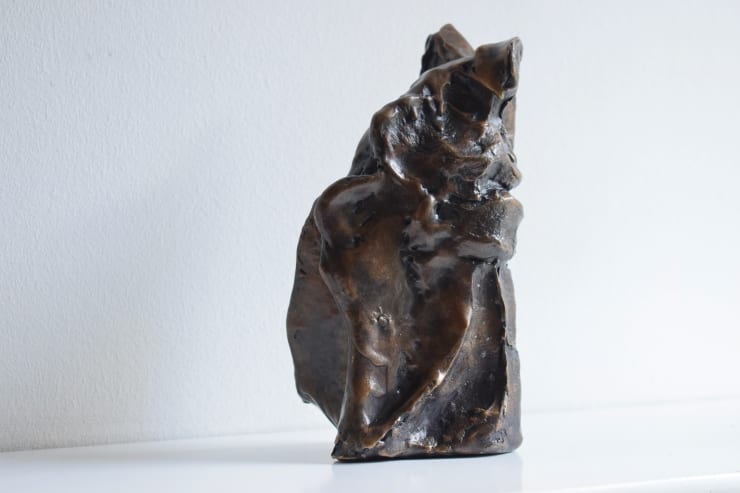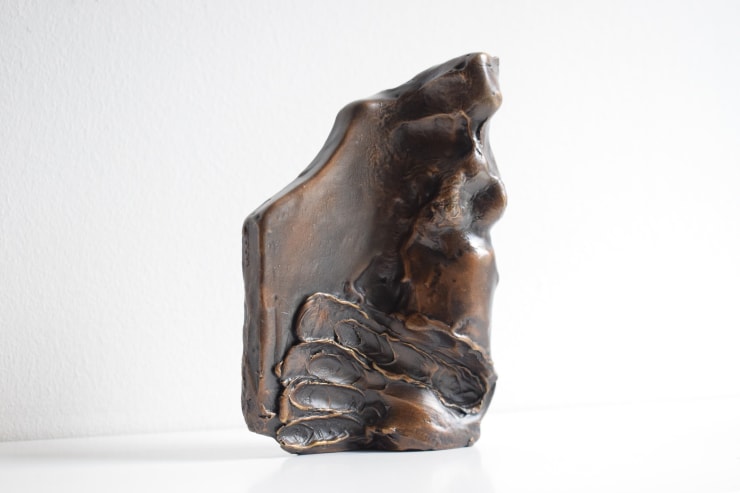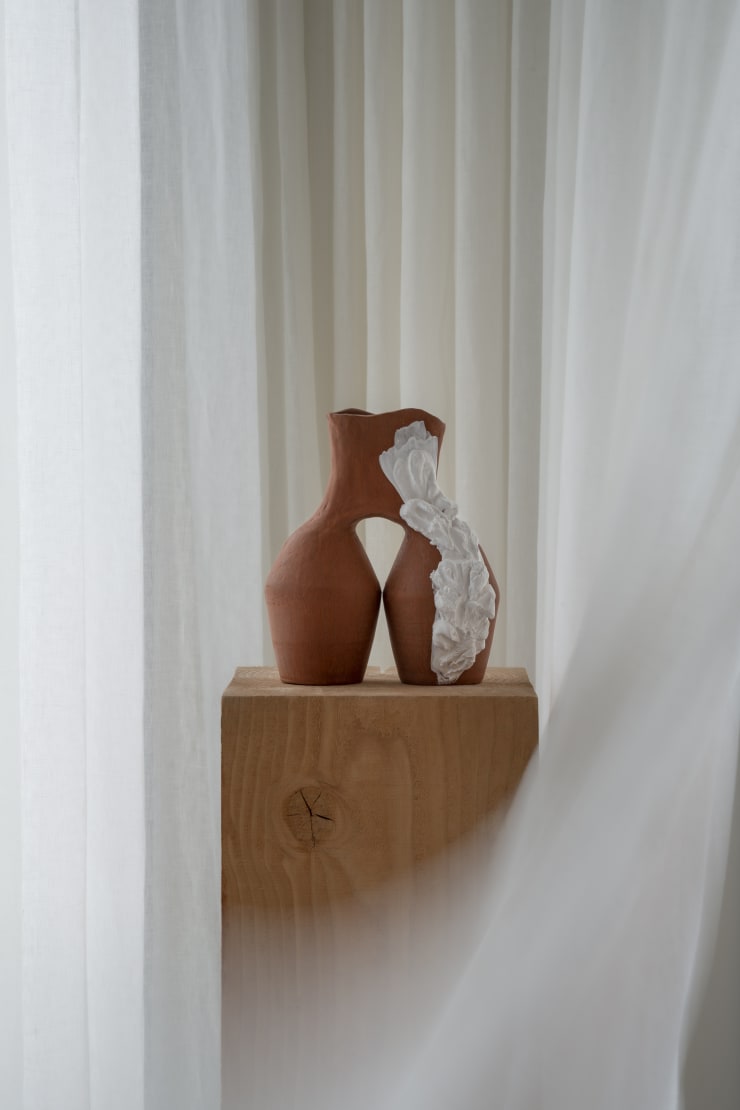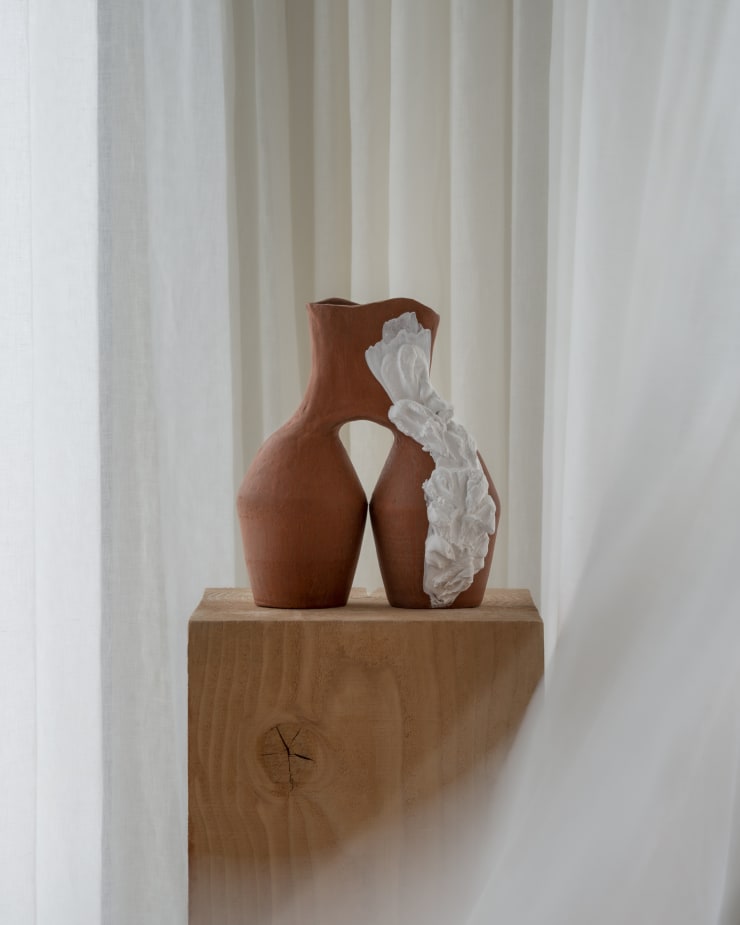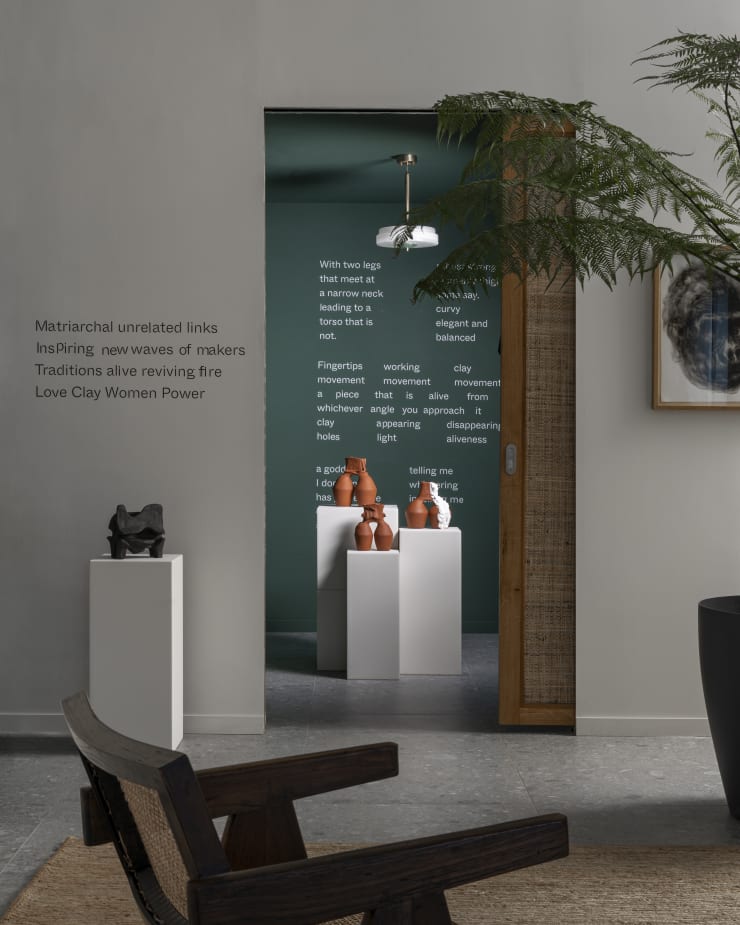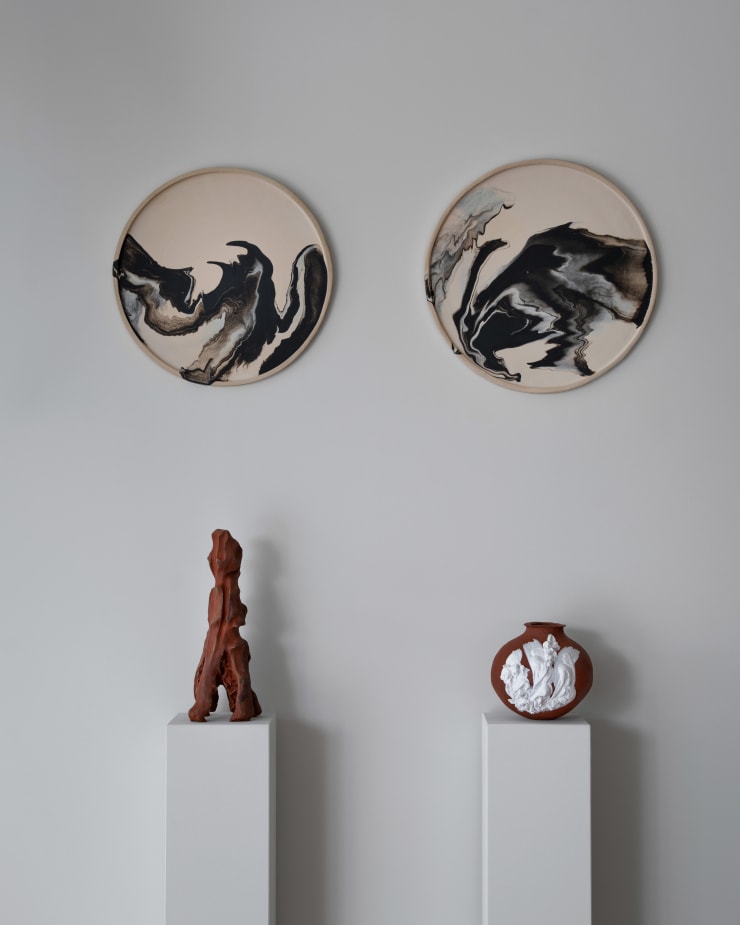Uprooting, Rerooting: Matter and The Construction of the Self: Bisila Noha's Solo Exhibition
From her early body of work, Brumas, to current projects that blur the boundaries between pottery and sculpture, to brand new pieces using other materials such as plaster and bronze.
For the first time, plaster appears in the artist's work as a material translated into work and not only through a process of production. Working with clay and plaster a tension and balance emerge from several works in three dimensions. In the world of ceramics, working with plaster in conjunction with ceramics causes cold sweat, as it often results in breakage. "Driven by a desire to bring my pieces a bit more alive, to make them more three-dimensional, along with that idea of making clay and plaster equals in a ceramics environment, those hybrid pieces were born." The volatility of plaster and the patience demanded by clay are respectively a metaphor for the child and the adult trying to find common ground. "They are about that fire we all carry inside. About the different sides of ourselves we embody, which often are in conflict”, illustrates Bisila Noha.
In her search for movement and dynamism, the artist has turned to cubist and futurist sculpture. The series of white stoneware ‘plates’ with black marbled effects is a continuation of what the artist was creating at the beginning of her practice. They are the evocation of a search for a union on a societal scale of certain dualities that are omnipresent in Noha's work: clay and plaster, the throwing technique and hand-building, the South and the North, black and white, the feminine and the masculine, the utilitarian and the artistic…
A series of three vases - which are not vases - are reminiscent of relics that might belong to an ethnographic museum or painted abstractions reminiscent of the work of Toshiko Takaezu (1922-2011). The series of plates and vases are actually canvases for free compositions. Revealing beautiful mysterious visual textures as if they were reliques coming from another time as if it were fragments from the past.
The Brumas series, on the other hand, was created with a tactile approach to the production through which the sculpture is apprehended. Noha's work is increasingly sculptural, reminiscent of the counter-current impulse of Rebecca Warren's image-sculptures, which work in such a way that the surface is never completely seductive. The exhibition also presents for the first time sculptures made in bronze. Theatrical, these pieces are revealed in movements reminiscent of the work of Kara Walker.
Bisila Noha’s oeuvre is in perpetual flow. Yet infused with complex and resolutely contemporary issues, her work appears simple, honest and even naive at times. Sometimes contemplative, sometimes dynamic but definitely political, her work teaches us about the importance of understanding that we are all connected despite our differences. Her work in this sense echoes the concept of Tout-Monde - an all-encompassing world - and creolisation thought by Edouard Glissant (1928-2011), poet, novelist, essayist from Martinique. Posing the observation of a world given as evolutionary and as project. As an artist, a ceramist, a woman of African and European origin, the affirmation of her multiple identities is felt in the essence of her work as well as in the aesthetics and constant quest.
From her early body of work, Brumas, to current projects that blur the boundaries between pottery and sculpture, to brand new pieces using other materials such as plaster and bronze.
For the first time, plaster appears in the artist's work as a material translated into work and not only through a process of production. Working with clay and plaster a tension and balance emerge from several works in three dimensions. In the world of ceramics, working with plaster in conjunction with ceramics causes cold sweat, as it often results in breakage. "Driven by a desire to bring my pieces a bit more alive, to make them more three-dimensional, along with that idea of making clay and plaster equals in a ceramics environment, those hybrid pieces were born." The volatility of plaster and the patience demanded by clay are respectively a metaphor for the child and the adult trying to find common ground. "They are about that fire we all carry inside. About the different sides of ourselves we embody, which often are in conflict”, illustrates Bisila Noha.
In her search for movement and dynamism, the artist has turned to cubist and futurist sculpture. The series of white stoneware ‘plates’ with black marbled effects is a continuation of what the artist was creating at the beginning of her practice. They are the evocation of a search for a union on a societal scale of certain dualities that are omnipresent in Noha's work: clay and plaster, the throwing technique and hand-building, the South and the North, black and white, the feminine and the masculine, the utilitarian and the artistic…
A series of three vases - which are not vases - are reminiscent of relics that might belong to an ethnographic museum or painted abstractions reminiscent of the work of Toshiko Takaezu (1922-2011). The series of plates and vases are actually canvases for free compositions. Revealing beautiful mysterious visual textures as if they were reliques coming from another time as if it were fragments from the past.
The Brumas series, on the other hand, was created with a tactile approach to the production through which the sculpture is apprehended. Noha's work is increasingly sculptural, reminiscent of the counter-current impulse of Rebecca Warren's image-sculptures, which work in such a way that the surface is never completely seductive. The exhibition also presents for the first time sculptures made in bronze. Theatrical, these pieces are revealed in movements reminiscent of the work of Kara Walker.
Clay is for many artists a synonymous of many things. Connection to the earth, symbol of relation to the past, nurturing element, symbol of death and rebirth. For Black women artists using clay, it represents a way to reclaim a land, a sense of community. Although few Black women ceramists have been recognised as such, they have paved the way. Yet, contemporary ceramic artists must search for historical role models related to the African continent.
To know oneself, one can often look for where one comes from. The past holds clues but not all the answers. Born to a Spanish mother and an Equatorial Guinean father, Bisila Noha - then on a quest to reconnect with her roots - used local clay from her father's village in order to create a body of work. The project is entitled ‘Baney Clay - An Unearthed Identity’. A biomorphic form appears to her in the course of her researches. "Two legs coming together to create something new. A perfect metaphor for my bi-racial heritage," explains Bisila Noha.
Noha later discovered the shape she had drawn inspiration from belonged to Kouame Kakaha, an Ivorian ceramist born Tanoh Sakassou around 1960, with a piece made around 1995, sold in May 2012 at Sotheby's New York. Very little documentation is available on Kouame Kakaha to learn more about the artist and her work. Shortly after, ’Searching for Kouame Kakaha: A celebration of the unnamed women of clay; our shared mothers and grandmothers’ pays tribute not only to Kouame Kakaha but also to Ladi Kwali (1925-1984) and all the other unrecognised African women ceramic artists. In this sense Noha creates a time portal as a spiritual heir and futuristic archaeologist for future generations. A bridge between many things.
Bisila Noha’s oeuvre is in perpetual flow. Yet infused with complex and resolutely contemporary issues, her work appears simple, honest and even naive at times. Sometimes contemplative, sometimes dynamic but definitely political, her work teaches us about the importance of understanding that we are all connected despite our differences. Her work in this sense echoes the concept of Tout-Monde - an all-encompassing world - and creolisation thought by Edouard Glissant (1928-2011), poet, novelist, essayist from Martinique. Posing the observation of a world given as evolutionary and as project. As an artist, a ceramist, a woman of African and European origin, the affirmation of her multiple identities is felt in the essence of her work as well as in the aesthetics and constant quest.



